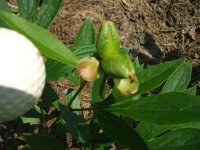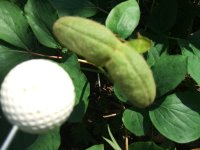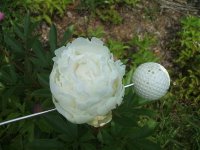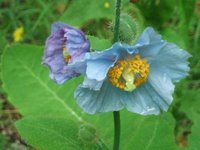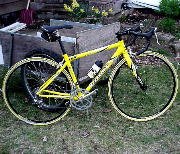 Somewhat earlier than expected, the carpels of a Paeonia steveniana plant opened today. The plant is specifically of the "high altitude form" which in flower and in foliage seemed identical with the rest of my plants, to me. But the seed
Somewhat earlier than expected, the carpels of a Paeonia steveniana plant opened today. The plant is specifically of the "high altitude form" which in flower and in foliage seemed identical with the rest of my plants, to me. But the seed  seems to have ripened faster than on the rest of them, which may be a factor of the shorter growing season higher up.
seems to have ripened faster than on the rest of them, which may be a factor of the shorter growing season higher up.The shiny black beads are viable seed, whereas the red ones are seeds which
 aborted development before becoming mature. They are actually more red than the photos show; very bright and showy, moreso on a gloomy day than in bright sunlight (due to competing glint off the shiny leafs).
aborted development before becoming mature. They are actually more red than the photos show; very bright and showy, moreso on a gloomy day than in bright sunlight (due to competing glint off the shiny leafs)._______________________________
I believe today was the first time in about 2 months when the Environment Canada data for Halifax didn't show any overnight hours with relative humidity at less than 100%!! Fortunately that fog doesn't make it up my "mountain".







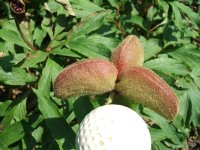

 Carpels of Paeonia anomala subsp intermedia
Carpels of Paeonia anomala subsp intermedia

